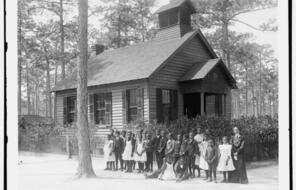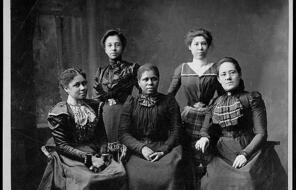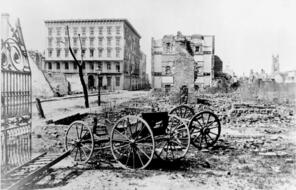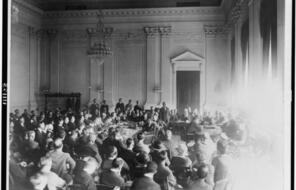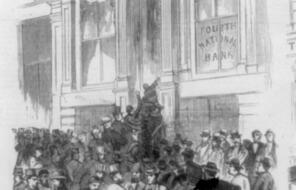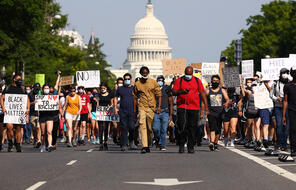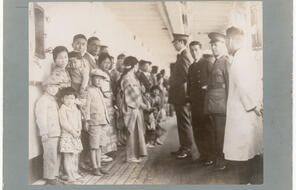The Incarceration of Japanese Americans During World War II
Subject
- History
- Social Studies
Language
English — USUpdated
Get it in Google Drive!
Get everything you need including content from this page
Get it in Google Drive!
Get everything you need including content from this page
On December 7, 1941, Japan attacked Pearl Harbor, the main American naval base in Hawaii. The next day, the United States entered World War II by declaring war on Japan. A few months later, the US government authorized the removal of all Japanese Americans from the West Coast—regardless of age or citizenship status. They were sent to prison camps surrounded by barbed wire and guarded by armed soldiers. Not one of them had been tried for a crime or even charged with wrongdoing. They were imprisoned solely because of their ancestry.
In 1942, there were about 127,000 Japanese Americans living in the continental United States. Over 93,000 of them made their homes in California, and another 19,000 lived in Washington and Oregon. About two-thirds were born in the United States and were therefore American citizens. The rest were Japanese nationals, most of whom had settled in the United States before 1924, the year the nation banned all immigration from Asia.
Throughout the winter of 1941–1942, both groups found themselves under increasing attack. One Los Angeles newspaper reported that armed Japanese were in Mexico, ready to attack. There were also rumors that Japanese fishermen were planting mines in American harbors, blowing up tunnels, and even poisoning the water supply. There was no truth to the rumors, but they encouraged General John DeWitt, head of the Western Defense Command, to label all Japanese Americans “a menace which had to be dealt with.” 1
In response to pressure from individuals and groups on the West Coast, on February 19, 1942, President Franklin D. Roosevelt issued Executive Order 9066. It authorized the US Army to “designate military areas” from which “any persons may be excluded.” Although the words Japanese American did not appear on the order, its meaning was clear. On March 24, 1942, General DeWitt began forcibly removing every person of Japanese ancestry from the West Coast, regardless of citizenship.
In city after city along the Pacific coast, posters tacked to telephone poles ordered Japanese Americans to report to one of 64 “civil control stations.” There, the head of each household was given a number that would be used to identify their family members and their belongings. No one was allowed to bring more than one duffel bag and two suitcases. So most people had to quickly find someone willing to buy, store, or guard their property. Not surprisingly, most Japanese Americans lost everything they had.
The evacuation began on March 25, 1942, but the government did not remove all Japanese Americans immediately. Once the order was posted in a city or town, families had just a few days to report to a local assembly center. How long a family stayed in an assembly center varied greatly. Some families were at the center for just a few hours. Other families were held for days or even weeks. By August 12, however, every Japanese American who lived on the West Coast was bused from an assembly center to one of ten prison camps, each housing 8,000 to 18,000 people. Although many of the officials who ran those camps tried to make conditions as humane as possible, they could not alter the reality; the camps were prisons guarded by armed soldiers.
By 1943, the US government had begun to reassess its policy toward Japanese Americans. In January, the secretary of war announced that every faithful citizen “regardless of ancestry” had an “inherent right to bear arms in our nation’s battle.” US citizens of Japanese ancestry were no longer turned away when they tried to enlist in the armed forces. Indeed, many were then drafted—even those held in prison camps. To determine their loyalty, the government issued a questionnaire to every Japanese American over the age of 17. Those who “passed” could leave the camp to join the armed forces or find work in another part of the country.
By 1944, the US War Department had revoked the evacuation order. Slowly, the camps were closed. By the end of the year, about 35,000 Japanese Americans had left the camps, mainly to serve in the army. The majority, however, remained in the camps until the war ended in August 1945. The small number of Japanese who refused to declare their loyalty to the United States were the last to be released. Many were held in a high-security camp until March 21, 1946, when it was finally shut down.
Teach a Facing History lesson featuring this resource.
- 1Quoted in Roger Daniels, Prisoners Without Trial: Japanese Americans in World War II (Hill and Wang, 1993), 49.
How to Cite This Reading
Facing History & Ourselves, “The Incarceration of Japanese Americans During World War II”, last updated September 12, 2024.

